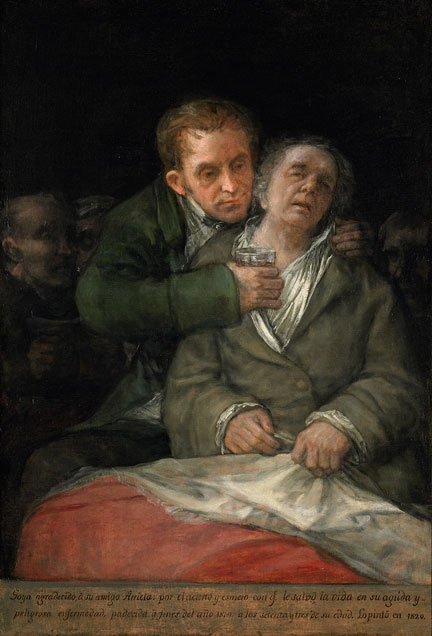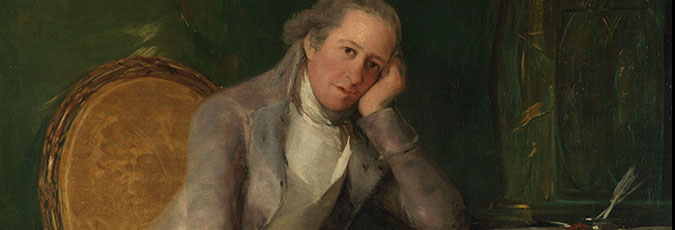The private Goya
‘Self-Portrait with Doctor Arrieta’
Goya was critical of quacks and charlatans and had ridiculed them in 1799 in his celebrated series of satirical prints known as ‘Los Caprichos’. It might therefore come as a surprise when, following a terrible illness in 1819 which nearly killed him, he should paint a portrait of himself in his sickbed with a doctor offering him a potion to restore his health. Not unlike the religious ex-votos one sees in Catholic churches today, Goya inscribed the portrait explaining what had happened: ‘Goya, in gratitude to his friend Arrieta: for the skill and care with which he saved his life in his acute and dangerous illness, suffered at the end of the year 1819, at the age of 73. He painted it in 1820’.
Goya’s homage to the doctor who had saved his life and to whom he gave the portrait is heartfelt and full of tenderness and humanity. Clutching his bed sheets, a feeble Goya lies back in Arrieta’s supportive arms while mysterious figures stand behind in the semi-darkness. Perhaps they are attending to Goya; the friar-like figure on the left holds a vessel, possibly to administer the last rites; or perhaps they are devil-like figures waiting to take his soul away. Goya was a religious man – in his will made in 1811 he had asked to be buried in a Franciscan habit – but he was also a man of his own times who trusted in science and medicine.
The extent of Goya's relationship with his doctor is not known. All we know about Arrieta is that he later travelled to West Africa to study the bubonic plague and never returned.


